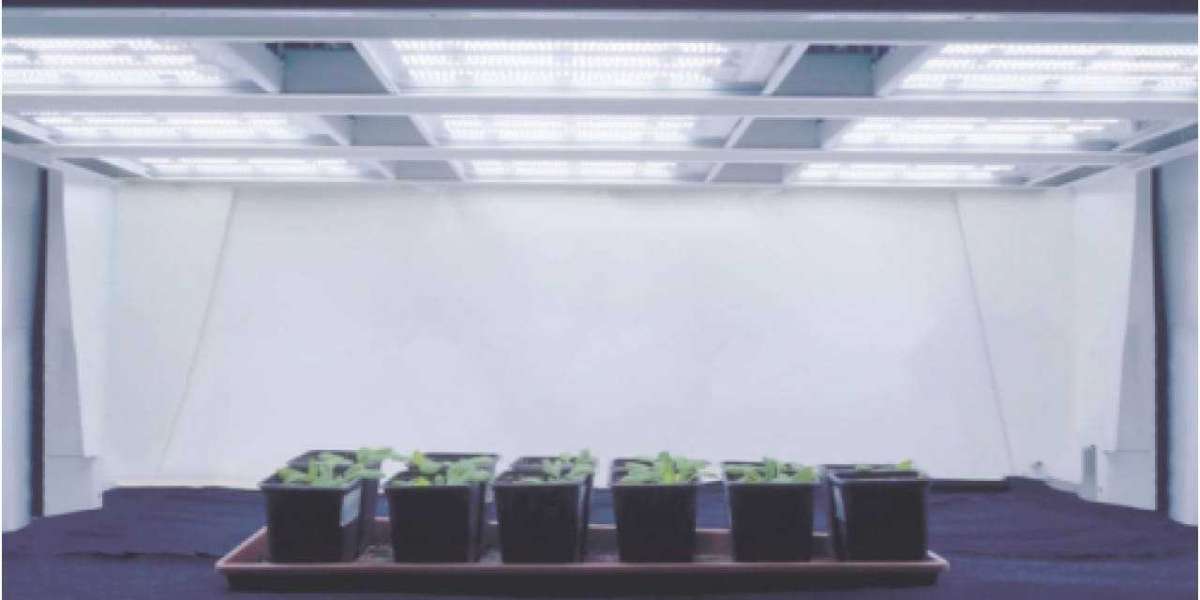Light serves as the lifeblood of plants, driving photosynthesis and essential growth processes. Yet, in indoor farming settings where natural sunlight is scarce, LED grow lights have emerged as a vital solution, offering precise control and efficiency. These lights replicate essential wavelengths like blue and red, pivotal for diverse plant stages. However, recent strides in technology have elevated their impact by introducing far-red light (700-800 nm), imperceptible to humans but pivotal for plant absorption.
Far-red light uniquely enhances photosynthesis, spurring robust stem growth, and optimizing flowering cycles. Its integration with traditional LED spectra not only boosts yield but also enhances overall plant vigor and health. This innovation underscores a transformative shift in indoor agriculture, promising more reliable and sustainable crop production year-round. As researchers delve deeper into its effects, the potential for far-red LED grow lights to redefine farming practices grows, promising unprecedented efficiencies and outcomes.
Understanding the Power of Far-Red Light
Far-red light interacts with a pigment in plants called phytochrome. This pigment acts like a switch, responding to different light wavelengths and influencing various developmental processes. Far-red light, when used alongside other wavelengths like red light as part of horticultural LED spectra, plays a significant role in:
Enhanced Flowering and Fruiting: Plants use the ratio of red to far-red light to determine their light environment. Increased far-red light can signal the "end of day" and trigger flowering in some plants. This allows indoor farmers to manipulate the light cycle to encourage earlier and more abundant flowering and fruiting.
Increased Plant Biomass: Far-red light can stimulate stem elongation and promote leaf expansion, leading to a thicker, bushier plant with increased overall biomass. This translates to higher yields for leafy greens and herbs.
Improved Plant Health: Studies suggest that far-red light can enhance a plant's stress tolerance. It may help them better handle fluctuations in temperature, humidity, and even pest infestations.
Choosing the Right Light for Your Indoor Farm
Modern LED grow lights can be equipped with specialized LED chips or diodes that emit far-red wavelengths alongside other beneficial light spectrums. This allows growers to create a customized light environment that caters to the specific needs of their crops.
Selecting high-quality horticulture lights with the far-red light spectrum involves considering several crucial factors.
- First and foremost is the light intensity, measured in lumens, which directly influences optimal plant growth.
- Ensuring adequate coverage across your entire cultivation area is equally important. The light spectrum, with a balanced mix of red and far-red wavelengths, plays a pivotal role in plant development.
- Lastly, color temperature significantly impacts plant morphology. Cooler light tends to promote vegetative growth, while warmer temperatures can stimulate flowering.
By carefully considering these elements, growers can create an ideal lighting environment for their plants to thrive. You can also consult specialists from an experienced LED grow light manufacturer like Valoya to help you with a tailored light plan for your plants for maximum efficiency.
Optimizing Light Exposure with Far-Red
For the best results with LED luminaires equipped with the far-red light spectrum, here are some recommendations.
#1 - Research Your Plants' Light Needs
Every plant species has unique light preferences. To maximize growth and yield, it's crucial to understand the specific light requirements of your plants. Consider these factors:
- Light intensity: The amount of light a plant receives.
- Light duration: The length of the light period (photoperiod).
- Light spectrum: The composition of light, including red, blue, green, and other wavelengths.
By tailoring your lighting conditions to your plants' needs, you can promote optimal growth, flowering, and fruiting.
#2 - Balancing Red and Far-Red Light Exposure
To achieve optimal plant development, it's essential to provide both red and far-red light in a balanced manner.
- Dedicated periods: Allocate specific time slots for red and far-red light exposure.
- Light scheduling: Create a light schedule that alternates between red and far-red light periods.
- Flexibility: Experiment with different light schedules to find the most effective pattern for your plants.
By carefully considering these factors, you can create the ideal lighting conditions for your plants to thrive.
LED grow lights for plants with far-red light represent a significant advancement in indoor farming technology. By using grow lights equipped with this wavelength, growers can unlock increased yields, promote healthier plants, and achieve greater control over their crops.








